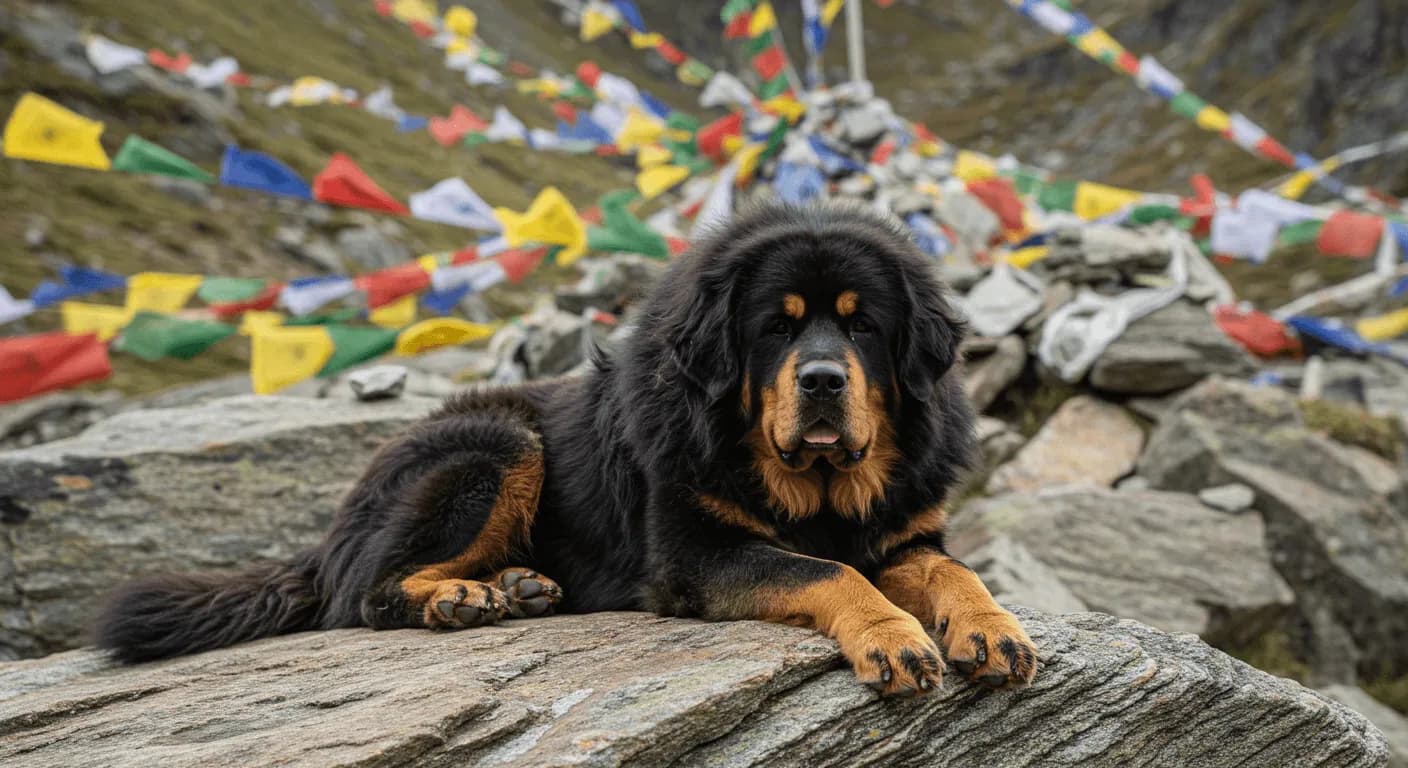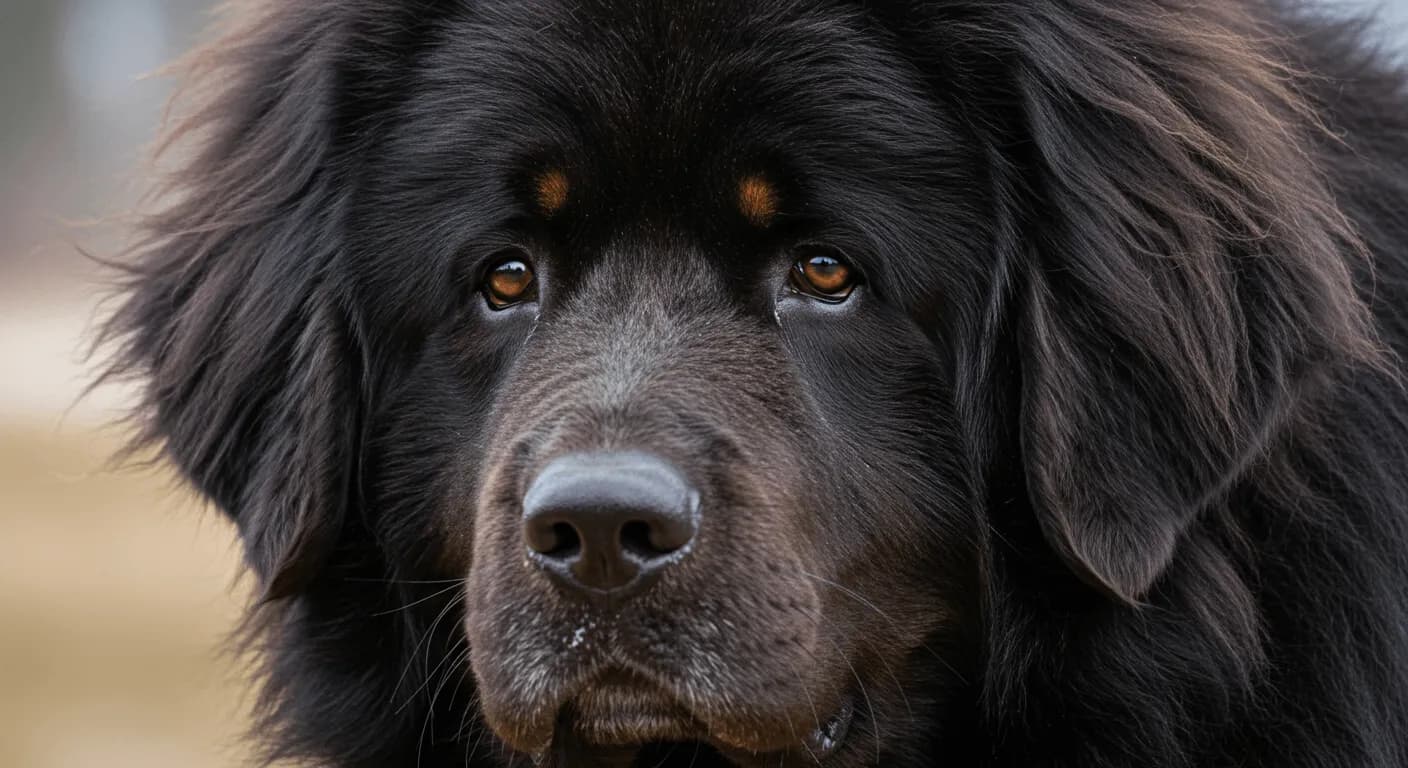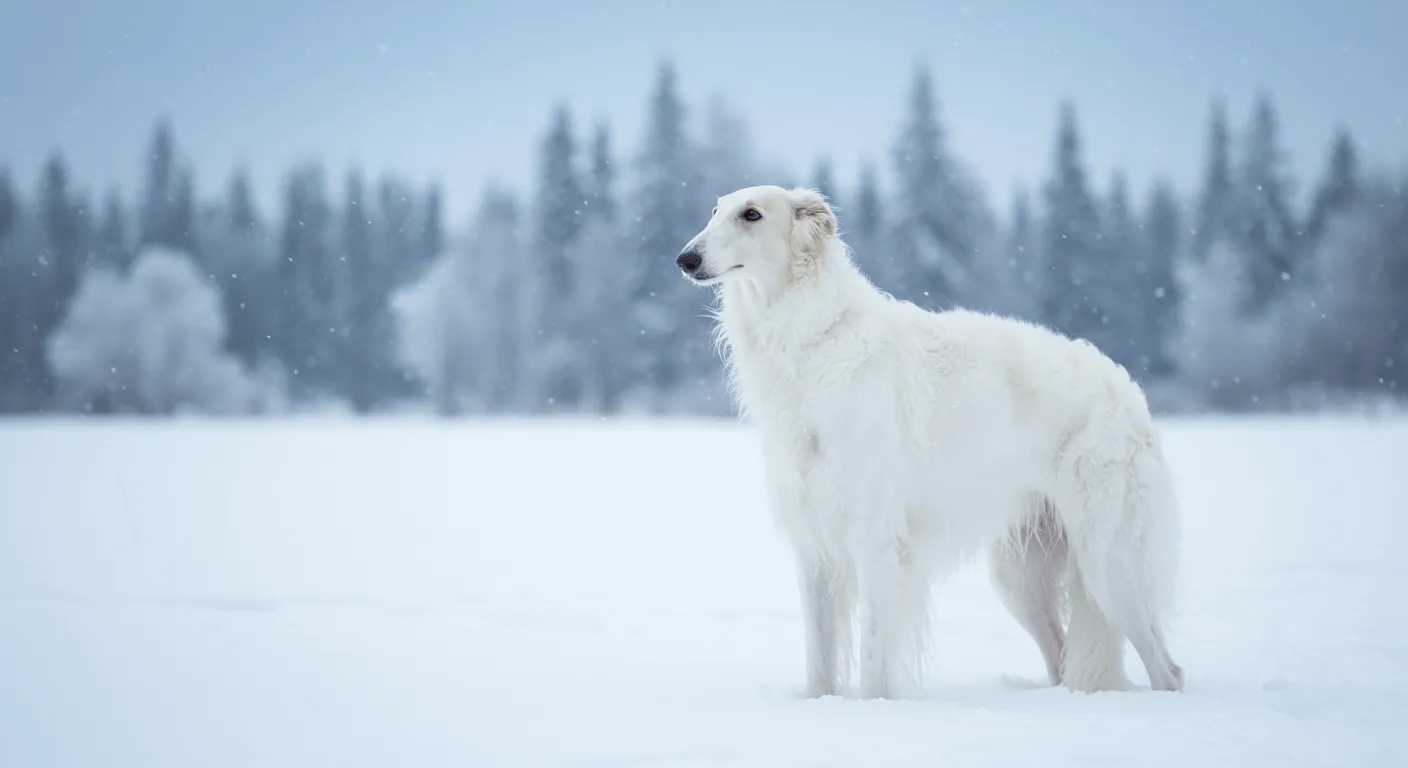The Tibetan Mastiff is one of the most ancient and revered dog breeds in existence, with a heritage that spans thousands of years. Frequently described as a living relic of the past, this impressive giant of the canine world is a guardian by nature and a legend by legacy. In this article, you'll discover the full story behind the majestic breed—from the earliest Tibetan Mastiff history and origin to how it became an iconic breed across the globe. We’ll delve into where the Tibetan Mastiff came from, its early roles, and what the breed was originally developed to do. You’ll also learn about the Tibetan Mastiff bloodlines history, how the breed got its name, and when the Tibetan Mastiff came to America.
Tibetan Mastiff History and Origin
Earliest Known Ancestors
The Tibetan Mastiff’s history begins in the unforgiving terrains of the Himalayas, where its ancestors lived alongside ancient nomads and monks. Genetic evidence suggests that the breed is closely linked to the prehistoric Molosser-type dogs—large, mastiff-like canines that likely descended from ancient and now extinct war dogs of Central Asia. Fossilized remains and historical writings imply that mastiff-type dogs have existed in the region for over 3,000 years, making the Tibetan Mastiff one of the oldest purebred dogs in the world.
According to canine historians, the breed has remained relatively unchanged due to the geographic isolation of the Tibetan Plateau. This rugged landscape limited genetic mixing and preserved the breed’s original traits.
Genetic Lineage
Genetic studies reveal that the Tibetan Mastiff is one of the foundational breeds of several other Asian and European mastiffs. DNA analysis indicates minimal genetic admixture with other dog breeds, explaining why the Tibetan Mastiff maintains such unique physical and behavioral characteristics.
The mitochondrial DNA of the breed also shows deep divergence from other domestic dog breeds, reinforcing claims that the Tibetan Mastiff originated from a distinct lineage. This preservation of bloodlines is one of the reasons why the Tibetan Mastiff bloodlines history is held in such high regard among canine researchers.
Prehistoric Environmental Context
To truly understand how the Tibetan Mastiff was developed, one must consider the high-altitude regions of Tibet, Nepal, and Bhutan. These areas posed extreme challenges—cold, hypoxic air, and rugged terrain.
The need for a strong, protective, and resilient animal encouraged the selection of traits like dense coats, large frames, independence, and high endurance. The environmental demands of the Himalayas played a pivotal role in the development of this legendary guardian dog.

Where the Tibetan Mastiff Came From
The Tibetan Mastiff originally came from the vast Himalayan region—specifically from Tibet, which is now an autonomous region within China. The breed's homeland includes other high-altitude regions such as Northern India, Nepal, and Bhutan, all of which share cultural and geographical ties.
The original native landscape, the Tibetan Plateau, is often referred to as the "Roof of the World." It offers little vegetation, harsh winters, and elevations exceeding 15,000 feet. These geographic factors contributed significantly to the breed’s physical and mental toughness.
Cultural Significance
In Tibetan culture, the Mastiff is more than a working dog—it’s a spiritual protector. Known locally as “Do-Khyi,” meaning “Tied Dog,” the breed was traditionally kept tethered at the gates of temples and homes, believed to ward off evil spirits. Tibetan monks, traders, and nomads prized the dog for its loyalty and its role as a spiritual and physical guardian.
The breed was also considered a symbol of wealth and status. Ownership was often limited to nobles and spiritual leaders, further embedding the dog into Tibetan society's elite tiers.

Environmental Influence on Breed Development
The Tibetan climate’s high-altitude effects fostered critical adaptations in the breed. The dog’s thick double coat provided insulation against freezing temperatures, while its strong skeletal structure supported long travels and standing guard for hours.
Additionally, the breed developed an independent temperament due to the necessity of decision-making in isolated environments. Unlike many other dogs, Tibetan Mastiffs are known for their capacity to problem-solve without human guidance—a trait bred by necessity.
Historical Purpose and Function
What the Tibetan Mastiff Was Bred For
The Tibetan Mastiff was originally bred to be a livestock guardian and protector of property. Nomadic herders of the Himalayas depended on these dogs to protect their flocks from wolves, bears, and snow leopards.
Among the most important functions of the breed were:
- Guarding monasteries, villages, and homes
- Protecting livestock such as yaks, sheep, and goats
- Providing companionship to monks and nomads
- Alerting communities to strangers or predators
Over time, their role took on both practical and spiritual dimensions. Not only were they protectors, but they also came to represent ancestral spirits, guardian deities, and even reincarnations according to local legends.
Evolution of Breed’s Function
While the original working role of the Tibetan Mastiff remained consistent for centuries, industrialization and modernization diminished the need for traditional livestock guardians in many parts of Tibet and Nepal. However, the breed’s stately appearance soon led to its role evolving to:
- Companion animal among elite Chinese families
- Guard dog for high-value estates across Asia
- Show dog in Western countries
Despite the shift in role, the breed’s innate drive to protect persists, making them excellent security animals even today.
Naming and Nomenclature
Etymology and Language Origins
The name “Tibetan Mastiff” is somewhat of a linguistic misnomer, as the term “mastiff” traditionally refers to European breeds. The name was likely assigned during Western exploration of Asia, as early British travelers and colonial officers compared the breed to their own mastiffs.
Locally, the dog is called “Do-Khyi.” Translated from Tibetan, “Do” means “door” and “Khyi” means “dog.” Together, the name emphasizes the breed’s historical role as a guardian of gates and properties.
Historical Naming Conventions
In ancient times, Tibetan Mastiffs were rarely named as individual dogs but identified by their role or their physical characteristics. Color-based names were common, such as:
- “Black Lion” for dark-coated dogs
- “Golden Protector” for reddish gold mastiffs
Western importers in the 1800s began using the phrase “Tibetan Mastiff” to categorize the breed formally. By the time the breed was introduced to England, the name stuck and is still used today across most of the world.

Historical Impact and Legacy
The influence of the Tibetan Mastiff throughout history is far-reaching. Here are several ways in which the breed has left its pawprint on societies around the world:
- Chinese emperors and officials imported the breed as a status symbol
- The British Royal Family received Tibetan Mastiffs as gifts in the 1800s
- Ancient texts from 1100 BCE describe strong, lion-like dogs living in the Himalayas—believed to be early references to the breed
Its protective instincts, visual grandeur, and spiritual symbolism have helped the Tibetan Mastiff cement its place in both history and modern culture.
Societal Contributions
The breed significantly impacted rural economies by protecting valuable livestock. Communities relied on the Tibetan Mastiff to preserve livelihood assets. In spiritual spheres, they served as temple sentinels and were incorporated into rituals and folklore.
Recognition Over Time
The West’s introduction to Tibetan Mastiffs occurred in the 19th century during British expeditions into Tibet. Queen Victoria was allegedly gifted a pair in 1847, and by the late 1800s, the breed had begun to appear in British kennel clubs. However, it was not until much later that the Tibetan Mastiff enjoyed widespread Western popularity.
When the Tibetan Mastiff Came to America
The first Tibetan Mastiffs came to the United States in the late 1950s, imported primarily by diplomats and military personnel. However, it wasn't until the 1970s that interest began to solidify. In 1974, the Tibetan Mastiff Club of America was formed to protect and promote the breed.
The American Kennel Club (AKC) formally recognized the Tibetan Mastiff in 2006. Since then, it’s been steadily featured in canine competitions and registries, although it's still considered a rare breed.
Summary of Tibetan Mastiff’s Development Through Time
To encapsulate how the Tibetan Mastiff was developed, here’s a brief timeline:
- Ancient Origins (c. 1100 BCE): Molosser-type dogs emerge in Central Asia, with early references in Chinese and Mesopotamian texts.
- Tibetan Plateau Domestication (Before 500 BCE): Distinct Tibetan bloodlines begin to form, bred by monks and nomads.
- Medieval Period (500 CE – 1500 CE): Breed maintains role as guardian of flocks and sanctuaries.
- Western Discovery (1800s): British explorers coin the term “Tibetan Mastiff,” introducing the breed to Europe.
- American Introduction (1950s–1970s): Dogs imported to the U.S.; breed clubs established.
- Modern Recognition (2006–Present): AKC recognition, increased global awareness, and luxury demand in parts of Asia.
Fun Facts About the Tibetan Mastiff
- They often bark at night, a trait bred for deterring predators while owners slept.
- Puppies take a long time to mature and may not reach full psychological adulthood until they're 4 years old.
- The Tibetan Mastiff is known to be “cat-like”—independent and sometimes aloof.
Key Characteristics of the Breed
- Height: 24 – 30 inches at the shoulder
- Weight: 70 – 150 pounds (depending on sex and lineage)
- Coat: Dense double coat, with a thick mane-like ruff around the neck
- Temperament: Aloof, strong-willed, protective, intelligent
Tibetan Mastiffs are not for first-time dog owners due to their dominant and independent nature, but for the right person, they are affectionate, loyal companions.
Why Tibetan Mastiffs Remain So Revered
The Tibetan Mastiff’s ancient lineage, noble role, and commanding presence continue to captivate dog lovers around the world. Known for unwavering loyalty and unmatched bravery, this breed carries the legacy of the Himalayas with every step.
Stay tuned for an in-depth look at the breed’s modern journey in our next section.## Conclusion
The history of the Tibetan Mastiff is a rich tapestry woven from ancient traditions, harsh environments, and deep spiritual significance. From its origins on the rooftop of the world to its roles as both guardian and companion, this breed has journeyed across continents and centuries with its noble purpose intact. The Tibetan Mastiff was not just bred for protection—it was born from a specific way of life that valued strength, independence, and loyalty above all else.
Today, the breed stands as a living monument to its heritage. Whether found guarding homes in modern cities or showcased at prestigious dog shows across the world, the Tibetan Mastiff commands respect and admiration. Its bloodlines tell a story of survival, adaptation, and unbroken connection to its ancestral role.
For those interested in a dog with a deep-rooted history, unmatched presence, and storied past, the Tibetan Mastiff remains a breed unlike any other. Understanding where the Tibetan Mastiff came from, what it was bred for, and how it evolved helps us appreciate not just the dog itself, but the enduring bond between dogs and human civilization.




